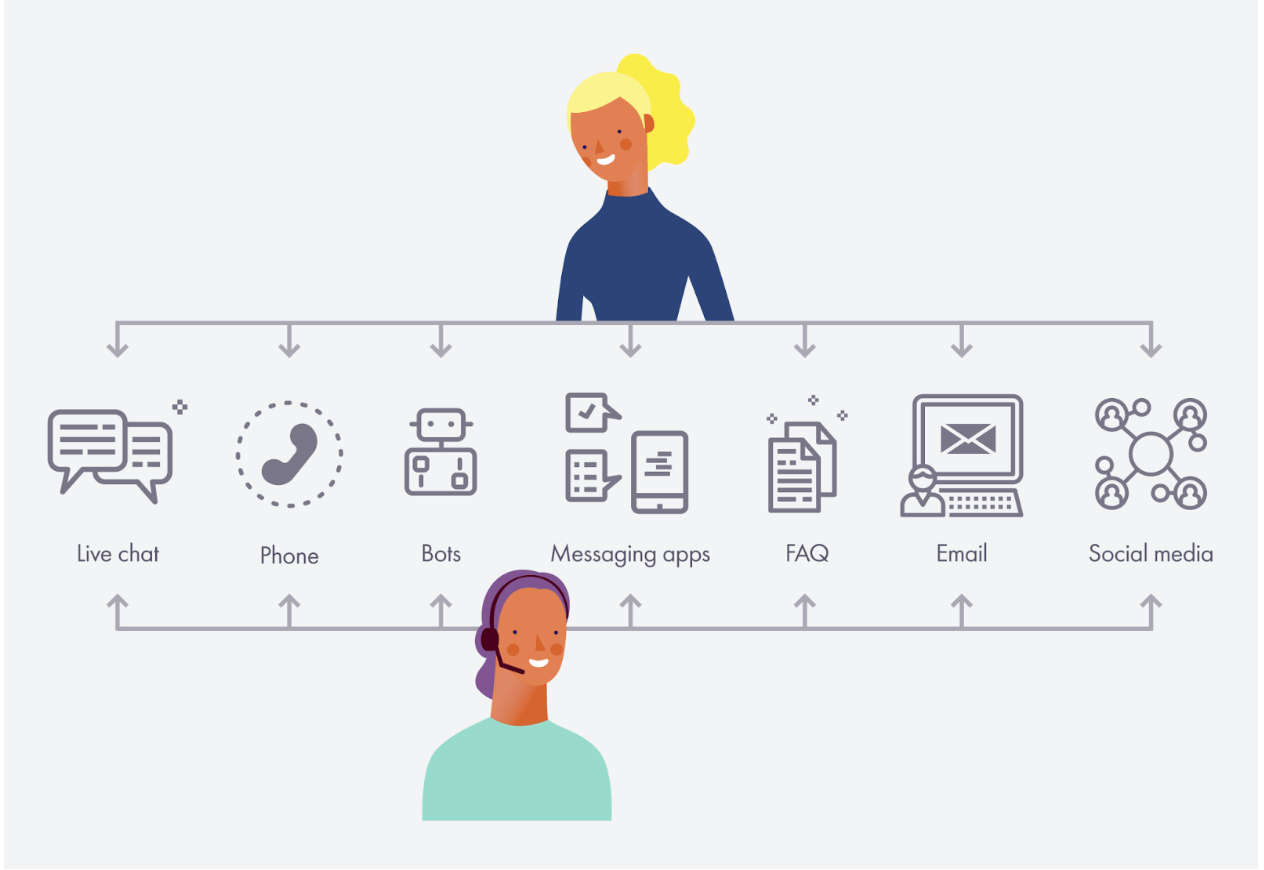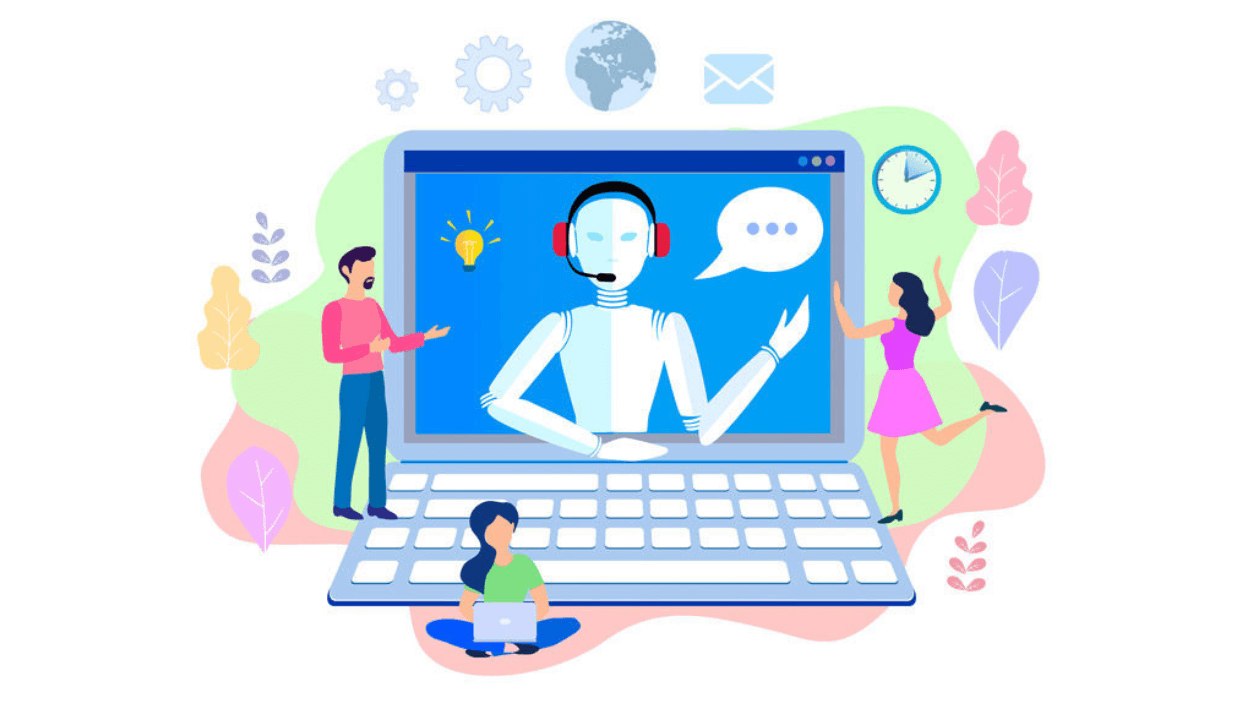There's massive competition in the eCommerce space.
You need to put in some effort to stand out amongst the worldwide ecommerce industry, which is expected to grow by 8.9% in 2023. And one of the many ways to make a difference is to provide customer service that helps build loyalty and drive sales through positive word-of-mouth.
Customer service in ecommerce is all about matching (or even surpassing) customer expectations, providing value through meaningful interactions, and helping customers overcome challenges. It is one of the best ways to differentiate yourself in the market and steal your competitors' unhappy customers.
But the question is — how can your eCommerce business match up to such growing customer service demands? A survey suggests that around 73% of consumers emphasize customer experience (CX) when purchasing.
Now that consumer services are pivotal to ecommerce business growth, you also need to monitor the trends that emerge every year. It may sound challenging, but it is necessary to exceed customer expectations and drive more sales in the long run.
Here, we share some of the top industry insights on customer experience strategy for ecommerce businesses. Take advantage of industry insights, capitalize on timely chances to fulfill customers' most urgent requirements, and build a customer experience befitting today's knowledgeable consumer.
6 Top Customer Service Trends for eCommerce Brands in 2023
1. Adopt a mobile-first approach
It is 2022; mobile is inevitable, and so will be a mobile-first customer service approach. Mobile devices are allowing customers to connect with your business on the go.
This means your ecommerce customer strategy should emphasize placing your customers' needs on mobile devices as a top priority.
It also implies that your business needs to prioritize mobile app and mobile web capabilities above the desktop version.
Your customer support team's performance and efficiency are directly tied to the success and efficiency of your mobile channel. This means you must gauge customer satisfaction by knowing how quickly problems are resolved over the phone.
Also, are you giving your customers an option to download an intuitive ecommerce mobile app of your brand so they can directly approach a query for a particular order? If not, you must consider creating one and providing quick help through the mobile app.
2. Personalize your customer service
More personalized customer responses would mean improving your chances of driving more sales. 90% of customers will splurge with companies that personalize customer service.
A Forrester study suggests that businesses prioritizing personalization saw a 33% boost in customer loyalty and engagement.
Examples of this approach include addressing consumers by name in correspondence, acknowledging their past purchases, thanking them for trusting your brand, etc.
Customer service would need you to put the customer before your brand and offer them more beyond the face value of purchased products.
It doesn't matter whether you use chatbots, email templates, phone scripts, or other customer service software to automate your services that ensure personalized touch.
And as more retailers flood into the online marketplace, one of the best ways to stand out among the masses is to make customer interactions more human.
Technology has made it simpler for your business to collect customer data and automatically create a customized experience. Your customer service executives can offer support tailored to each customer's issue and situation by leveraging the right personalization tools.
This approach will help them resolve customer issues faster, eliminating time lost in the 'trial-and-error' approach.
Moreover, to ensure excellent customer service across all channels, it is crucial for eCommerce brands to invest in hiring competent customer service staff who possess strong communication skills, empathy, and problem-solving abilities.
3. Offer omnichannel support
A wider customer base means providing as many channels as possible for them to connect to your business. If you are generating sales through your Instagram ads, Facebook ads, or using TikTok ads for eCommerce, you must be present on each platform and address customer queries.
Therefore, omnichannel customer service is almost a 'must-have' in 2023. A Forrester research suggests more such predictions this year. As a result, digital technologies now permeate almost every aspect of life.
Also, omnichannel support (including phone calls) opens up the opportunity to reach wider audiences, especially customers who cannot access internet touchpoints due to a lack of digital literacy.
The year 2022 demands that providing a variety of ways for customers to contact you helps streamline their experience at various times in their journey.
When it comes to customer service, having an omnichannel strategy gives you the flexibility to meet the needs of your consumers no matter what channel they choose to reach you.
Social media messages are handled as efficiently as live chat on websites, and customer service representatives at call centers are no different.
4. Emphasize real-time support
Customers want to see the needle move, so you need to emphasize speed. They have anticipated more rapid responses and assistance, especially when big brands like Amazon, Alibaba, Rakuten, etc., can do so.
Around 79% of social media users anticipate a response within an hour after posting or messaging, while another 32% want a response within 30 minutes, and 11% want a reply instantly.
This means that if you are going to be at the top of customer service for your ecommerce business, you need to be fast.
Providing quick and helpful customer service is paramount for a successful ecommerce business, as it will provide invaluable insights into customer behavior, preferences, and expectations regarding the ecommerce experience.
Utilizing these ecommerce insights can help you stay ahead of the competition and provide the best possible customer experience.
With chatbots and other real-time support systems, customers may anticipate rapid responses because of their purpose. You can move beyond simply acknowledging the customer's concerns and instead faster resolution, as that is what they care about.
Chances are, only a handful of customers may get their queries resolved, especially when they are easy ones like warranty questions, product information, etc.
For example, customers may inquire about their express air freight shipment status. Providing such an update with an AI-powered chatbot or human customer support representative can go a long way in enhancing customer service.
Such specific customer queries need human attention fast. And therefore, the year 2022 will demand you to pivot resources that enable speedy and effective responses to customer queries.
5. Offer customer self-service
The days of relying on a landline phone service call to get an answer to a query are long gone. Customers are ready to leap into the world of self-service.
SOTI's research suggests that nearly 73% of customers prefer self-service technologies to enhance their retail shopping experience. This means many customers have come to anticipate this from your company.
Customers do not want to hold phones and wait to speak to a customer service representative.
Also, they can do away with waiting hours on social media to get a response. If customers want a speedy response, they are ready to help themselves.
Customer self-service can take many forms, such as creating a knowledge base packed with user manuals, step-by-step guides, how-to videos, and FAQs. Also, when lodging a complaint, you can offer customer booking portals (for appointment scheduling), chatbots, and tracking portals.
6. Integrate Artificial Intelligence (AI)
A customer service strategy in 2023 is incomplete if you do not leverage bots for customer care.
Customer service bots are on the rise, allowing businesses to give round-the-clock help through automated responses and helping customers solve technical problems.
You can use AI chatbots to automate many customer service processes to ensure 24/7 self-service that guarantees a better return on investment (ROI) than hiring a dedicated staff.
Chatbots are a cost-effective way to answer consumers' most frequently asked questions. In fact, 80% of executives surveyed say AI can be applied to any critical business decision.
Blending AI with Machine Learning (ML) would mean meeting customers' expectations of quicker, more precise, and personalized resolutions to queries.
ML adapts to growing customer questions and can mimic human interactions by leveraging predictive analytics, behavioral patterns, smart routing, etc.
Predictive analytics uses data from prior customer encounters to predict future outcomes in customer service analytics. Automated ML can identify when a consumer needs help when purchasing on your ecommerce site, ensuring you stay ahead of the curve.
While you are wondering how it is done, convolutional neural networks are used by experts to train the AI models on filtered data.
Moreover, you can also leverage ML to identify and contact prospective customers before they contact you to improve post-sales and the overall customer experience.
Over To You
Your retail ecommerce customer support team should review their operations and plan better ways to stay more efficient with customer service in 2022.
The necessity of customer service in ecommerce has never been more crucial for brands to succeed at a larger scale and craft their identity.
Customer service trends for eCommerce companies in 2022 and beyond are bound to be heavily influenced by personalization, omnichannel support, real-time support via AI & ML, and self-service.
eCommerce customer service is more about innovation than bringing in the right technology and tools. Your business can provide excellent service by becoming more responsive to your customers' needs and training your customer-facing teams to uplift your overall CX game.
Author Bio
Tim Ferguson is a writer and editor of Marketing Digest. He helps marketing agencies with SEO, link building, content marketing, online reputation management, and blogger outreach.
When he is not writing and editing for Marketing Digest, he learns more about content marketing and gets better at it.







